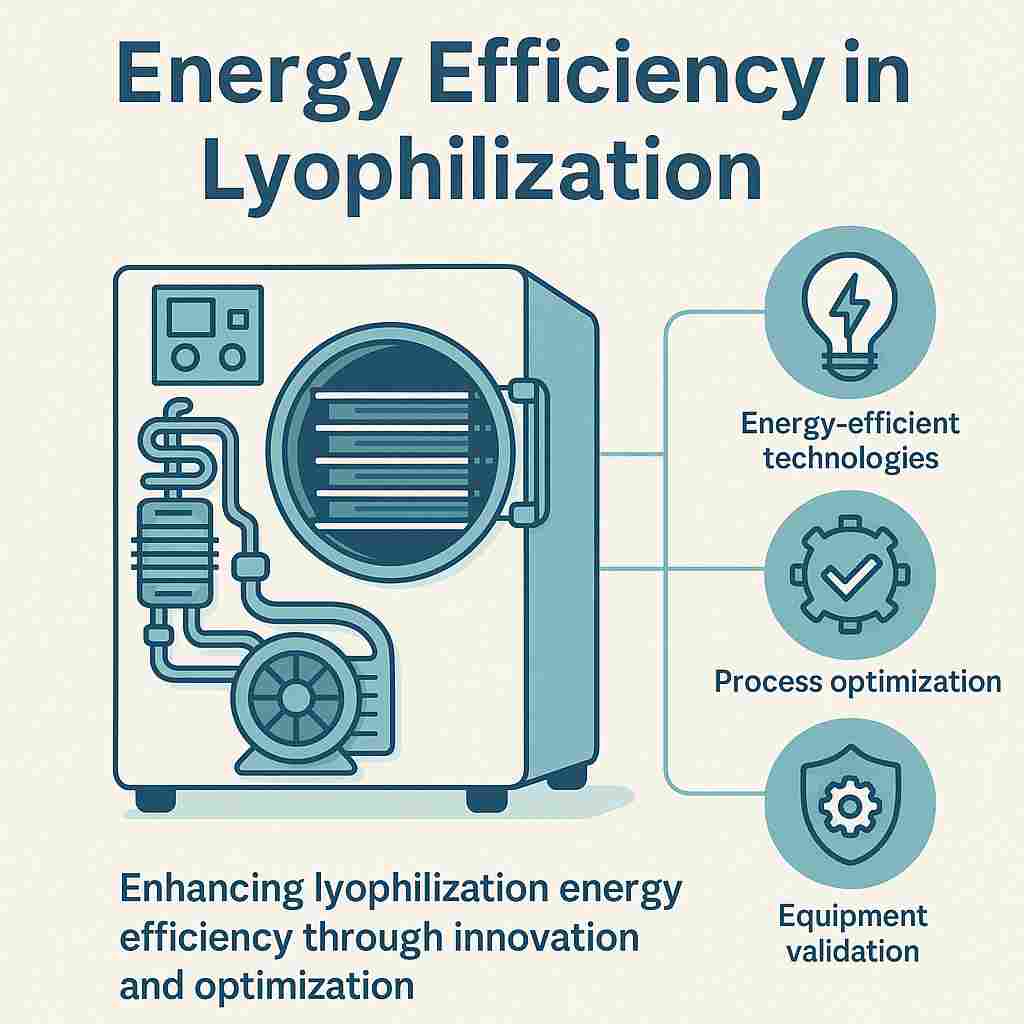Lyophilization, commonly known as freeze-drying, is essential in the pharmaceutical, biotech, and food industries. While it preserves sensitive materials like vaccines and freeze-dried fruits effectively, traditional freeze-drying can be energy-intensive and costly. In this article, we explore how to maximize energy efficiency in lyophilization—from equipment selection to innovative drying methods and process improvement strategies.
Why Energy Efficiency Matters
-
Cost Reduction
Energy costs represent a significant portion of operational expenses in freeze-drying. Efficient systems can lower electricity and coolant usage dramatically. -
Environmental Impact
Efficient lyophilization reduces carbon emissions and aligns with sustainability goals. -
Process Reliability
Properly optimized cycles ensure consistent product quality and safety, minimizing the need for re-runs.
Key Areas for Improving Energy Efficiency
1. Freeze-Dryer Equipment & Design
- Advanced Condenser Units: Well-insulated condensers reduce the load on refrigeration systems. Regular testing, like the freeze-dryer condenser capacity test, helps maintain peak performance.
- Vacuum System Optimization: Ensuring tight seals and minimal leaks—via tests like vacuum leak-test procedures—reduces operation time and energy lost to inefficiencies.
- Heating Element Control: Shelves with precise thermal control and rapid on/off switching reduce energy waste.
2. Cycle Design Optimization
- Primary/Secondary Drying Balancing: Correct balance avoids overheating and excessive cycle length—leading to energy savings and better product integrity.
- Shelf Heating Speeds: Faster heating reduces energy consumption but must match product tolerance—testing via shelf heating and cooling rate verification.
- Vacuum-Temperature Programming: Ramp vacuum and temperature gradually to use minimal energy while maintaining product quality.
3. Innovative Drying Technologies
- Microwave-Assisted Freeze-Drying
Microwave energy selectively heats the product, speeding sublimation and cutting cycle time. This method can reduce energy usage by up to 30% while preserving product structure. However, integration requires careful calibration and compliance. - Vacuum-Microwave Drying
Combining vacuum and microwaves boosts drying rate while minimizing thermal damage. This hybrid is gaining popularity in energy-conscious biotech and food applications.
Real-World Energy Savings
Energy efficiency translates into concrete cost savings. For example, a medium freeze-dryer can consume 100 kW per cycle. Optimized microwave-assisted or vacuum-microwave cycles may cut that by 20–40 kW per run. Over many cycles, the financial and environmental benefits compound significantly.
Supporting Practices & Documentation
To achieve and verify energy efficiency, several practices are recommended:
📄 Qualification and Validation Protocols
- Operational Qualification Protocol: Defines parameters like shelf temperature and vacuum ramp rates—ensuring cycles meet design energy objectives. See: Freeze Dryer Operational Qualification Protocol.
- Commissioning Reports: Incorporate performance and energy benchmarks—visit Commissioning of Lyophilization Units: Key Steps & Best Practices to outline what should be recorded.
- Periodic Performance Verification: Ongoing checks—such as leak testing and condenser capacity—help maintain energy standards over time. Example: Freeze-Dryer Periodic Performance Verification.
🔧 Maintenance Best Practices
- Refrigeration & Compressor Care: Proper cleaning and servicing of condenser jackets and compressors enhance efficiency—see Freeze-Dryer Compressor Motor Jacket Cleaning.
- CIP Systems: Regular clean-in-place cycles keep heat transfer surfaces efficient; detailed here: Clean-in-place in freeze-drying.
- Filter & Vacuum System Care: Clean, intact filters and properly calibrated Pirani gauges ensure vacuum efficiency. Refer to Freeze-Dryer Online Filter Integrity Test.
Energy Efficiency in Action: Case Study
A mid-sized biotech company implemented microwave-assisted lyophilization using new processors and recalibrated cycles.
Outcome:
- Cycle times reduced by ~30%
- Energy consumption decreased by ~25%
- Product moisture and structural quality remained high
This real-world success highlights how technology and validation synergize for energy gains.
Cost–Benefit and ROI Analysis
- Capital Investment
Equipment upgrades, such as microwave attachments or advanced control systems. - Operational Gains
Lower energy bills, reduced drying times, and increased throughput. - Environmental ROI
Reduced carbon emissions and improved sustainability profiles. - Regulatory Alignment
Processes aligned with CGMP practices and audit readiness—evident in documentation like CGMP Guidelines for Lyophilized Product Manufacturing.
Challenges and Considerations
- Technology Integration: Microwave systems require careful validation and regulatory submissions.
- Uniform Heating: Ensuring even microwave penetration across all vials.
- Process Validation: Extensive testing to meet quality and regulatory standards.
- Maintenance Demand: Specialized systems need trained technicians and service planning.
